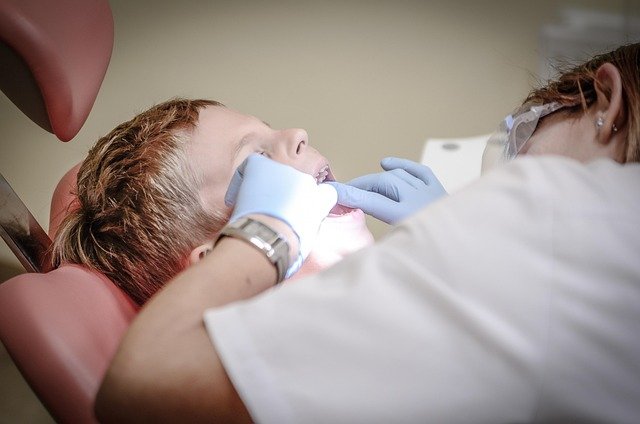Screwless Dental Implants: Modern Tooth Replacement Solutions
Losing a tooth can affect more than just your smile—it impacts your ability to eat comfortably, speak clearly, and feel confident in social situations. Traditional dental implants have long been the gold standard for tooth replacement, but recent innovations have introduced screwless alternatives that promise easier placement, reduced healing time, and comparable results. Understanding these modern solutions can help you make informed decisions about your dental health and explore options that align with your needs and budget.

Dental implants have revolutionized the way people approach tooth replacement, offering a permanent solution that mimics the look and function of natural teeth. While traditional screw-type implants have been widely used for decades, screwless dental implants represent an emerging technology designed to simplify the procedure and potentially reduce recovery time. These innovative systems use alternative anchoring methods, such as press-fit designs or specialized coatings that encourage bone integration without the need for threaded screws.
For residents in France seeking advanced dental care, understanding the differences between traditional and screwless implants can help you choose the right treatment. This article explores what screwless dental implants are, how they work, their benefits and limitations, and what you can expect in terms of cost.
What Are Screwless Dental Implants and How Do They Work?
Screwless dental implants, also known as press-fit or friction-fit implants, are designed to anchor into the jawbone without the threaded screw mechanism found in conventional implants. Instead of being twisted into place, these implants are pressed or tapped into a precisely prepared socket in the bone. The implant surface is typically coated with biocompatible materials like hydroxyapatite or other bone-friendly substances that promote osseointegration—the process by which the implant fuses with the surrounding bone tissue.
The primary advantage of this design is that it can reduce the mechanical stress placed on the bone during insertion, potentially lowering the risk of microfractures. Some screwless systems also allow for immediate or early loading, meaning a temporary crown can be placed shortly after the implant, reducing the overall treatment timeline. However, not all patients are suitable candidates for screwless implants, and factors such as bone density, overall health, and the specific location of the missing tooth must be carefully evaluated by a qualified dental professional.
Advanced Tooth Replacement: Discover Screwless Implant Technology
Screwless implant technology represents a shift toward minimally invasive dental procedures. These systems are often favored in situations where traditional drilling and threading might compromise bone integrity or where patients have experienced bone loss that makes conventional implants challenging. The press-fit design can also simplify the surgical process, potentially shortening the time spent in the dental chair and reducing post-operative discomfort.
Several manufacturers have developed proprietary screwless implant systems, each with unique features. Some use tapered designs that create a tight fit within the bone socket, while others rely on surface textures that encourage rapid bone growth around the implant. The choice of system depends on the individual patient’s anatomy, the expertise of the dental surgeon, and the specific clinical situation.
It is important to note that while screwless implants offer certain advantages, they are not universally superior to traditional screw-type implants. Long-term success rates, durability, and clinical outcomes are still being studied, and patients should discuss all available options with their dentist or oral surgeon before proceeding.
What Are Screwless Dental Implants, And How Much Do They Cost?
The cost of screwless dental implants can vary significantly depending on several factors, including the complexity of the case, the materials used, the experience of the dental professional, and the geographic location of the practice. In France, dental implant procedures are often partially covered by national health insurance, but the extent of coverage depends on the specific treatment plan and whether additional procedures, such as bone grafting or sinus lifts, are required.
On average, a single dental implant in France can range from €800 to €2,500 or more, with screwless systems typically falling within a similar price range. However, the total cost of treatment includes not only the implant itself but also the abutment (the connector piece), the crown, and any preparatory or follow-up procedures. Patients should request a detailed treatment plan and cost estimate from their dental provider before committing to the procedure.
| Provider/Clinic Type | Service Offered | Cost Estimation (per implant) |
|---|---|---|
| Public Dental Clinics | Screwless Implant Placement | €800 - €1,200 |
| Private Dental Practices | Screwless Implant with Crown | €1,500 - €2,500 |
| Specialized Implant Centers | Advanced Screwless Systems | €2,000 - €3,000+ |
| University Dental Schools | Training Clinics with Supervision | €600 - €1,000 |
Prices, rates, or cost estimates mentioned in this article are based on the latest available information but may change over time. Independent research is advised before making financial decisions.
It is also worth noting that some dental practices offer financing options or payment plans to make implant treatment more accessible. Additionally, supplementary health insurance policies may cover a portion of the costs not reimbursed by national insurance, so patients should review their coverage carefully.
Are Screwless Implants Right for You?
Determining whether screwless dental implants are the best choice for your situation requires a thorough evaluation by a qualified dental professional. Factors such as bone quality, the location of the missing tooth, overall oral health, and personal preferences all play a role in the decision-making process. Some patients may benefit from the simplified placement and potentially faster healing times associated with screwless systems, while others may be better suited to traditional screw-type implants.
It is also important to consider the long-term success rates and clinical evidence supporting screwless implants. While early studies and clinical reports are promising, traditional screw-type implants have decades of research demonstrating their reliability and durability. Patients should ask their dental provider about the specific system being used, its track record, and any potential risks or limitations.
Preparing for Your Dental Implant Procedure
Regardless of the type of implant chosen, proper preparation is essential for a successful outcome. This typically includes a comprehensive dental examination, imaging studies such as X-rays or CT scans, and a discussion of your medical history and any medications you are taking. Your dentist may also recommend preliminary treatments, such as tooth extractions, bone grafting, or treatment of gum disease, to ensure the implant has the best chance of success.
Following the procedure, patients should adhere to post-operative care instructions, which may include dietary modifications, oral hygiene practices, and follow-up appointments to monitor healing and osseointegration. Maintaining good oral health and regular dental check-ups are crucial for the long-term success of any dental implant.
Conclusion
Screwless dental implants offer a modern approach to tooth replacement, combining innovative design with the goal of simplifying placement and improving patient comfort. While they are not suitable for every case, they represent a valuable option for individuals seeking alternatives to traditional screw-type implants. Understanding the technology, costs, and considerations involved can help you make an informed decision about your dental care. Always consult with a qualified dental professional to discuss your specific needs and explore the best treatment options available in your area.
This article is for informational purposes only and should not be considered medical advice. Please consult a qualified healthcare professional for personalized guidance and treatment.




